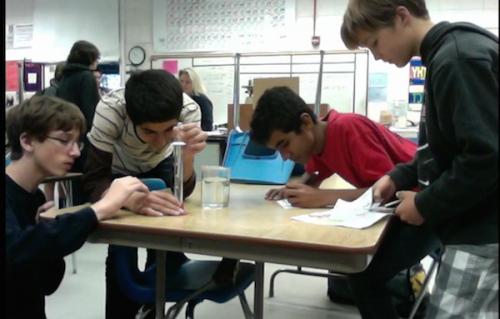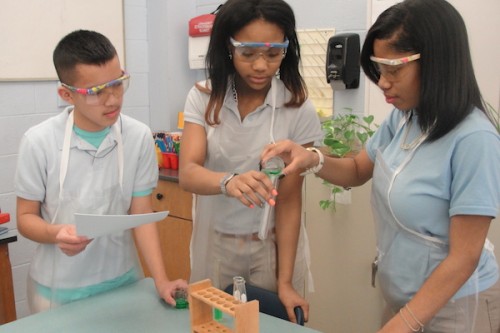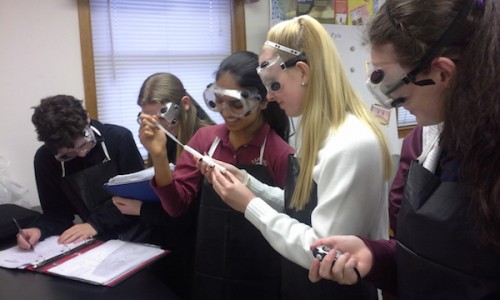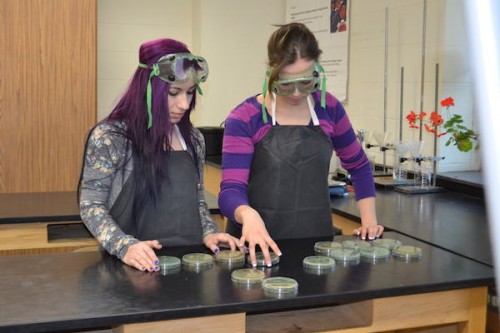Media Contact:
Jeff Goldstein, jeffgoldstein@ncesse.org, cell: 301-395-0770
This pages provides supporting information for the Student Spaceflight Experiments Program (SSEP) Odyssey II payload of 25 student experiments flying on SpaceX CRS-8. These experiments were originally aboard SpaceX CRS-7 as the SSEP Odyssey payload launched on June 28, 2015, and which exploded 2.5 minutes after launch with loss of all experiments. All student flight teams reconstituted their experiments, and they are re-flying as the Odyssey II payload.
Odyssey II is formally the experiments payload for the SSEP Mission 7 to ISS flight opportunity, which is SSEP’s 9th flight opportunity to fly student experiments to Low Earth Orbit since 2010. Besides 23 Mission 7 experiments, Odyssey II also includes two additional experiments: a Mission 6 experiment from North Charleston, SC, and a Mission 5 experiment from Howard County, MD, – both of which were lost twice, first on Orb-3 on October 28, 2014, and then again on SpaceX CRS-7 on June 28, 2015. (The compelling story of the loss, and rapid 1 month return-to-flight for the Mission 6 student flight teams is found in this December 8, 2014 blog post.)
Each Odyssey II experiment reflects the culmination of a formal research competition held in each of 25 communities across the U.S. In each community at least 300 students were formally engaged in microgravity experiment design and proposal writing, with typically 60-100 flight experiments proposed. Through a formal two step review process, one experiment is selected for flight from each community – so that each community is truly given its own space program.
There are 9 (of 101) SSEP student researchers traveling down for the launch of their experiments (representing 4 communities – Littleton, CO; Hillsborough County, FL; Brookhaven, MS; and North Charleston, SC). These student researchers at KSC, as well as all Mission 7 student researchers across the U.S., are available for interview.

Santa Monica, CA: Charlie Gooding, Shrayes Raman, Samuel Buckley-Bonanno and Adam Chamas finding the correct volume of solvent to perform paper chromatography in an FME.
SSEP National Program Summary
Launched in June 2010 by the National Center for Earth and Space Science Education (NCESSE) in strategic partnership with NanoRacks LLC, SSEP was designed as a model U.S. National STEM (Science, Technology, Engineering, and Math) education program that immerses typically 300 (grade 5-16) students across a community in every facet of authentic scientific research of their own design, using a highly captivating spaceflight opportunity on the International Space Station (ISS).
The Smithsonian National Air and Space Museum, Center for the Advancement of Science in Space (CASIS), and Subaru of America, Inc., are U.S. National Partners on SSEP. Magellan Aerospace is a Canadian National Partner on SSEP.
Each participating community is provided a flight certified mini-laboratory capable of supporting a single microgravity experiment, and all launch services to fly the mini-lab to ISS, and return it safely to Earth for harvesting and analysis. Mirroring how professional research is done, student teams across the community submit research proposals, and go through a formal proposal review process to select the community’s flight experiment. The design competition – from program start, to experiment design, to submission of proposals by student teams – spans 9 weeks. Students can design experiments in diverse fields, including: seed germination, crystal growth, physiology and life cycles of microorganisms (e.g. bacteria), food studies, and studies of micro-aquatic life. Content resources for teachers and students support foundational instruction on science in microgravity and experimental design. Additional SSEP program elements leverage the experience to engage the entire community, embracing a Learning Community Model for STEM education.

Mission 7 8th grade flight team in Pennsauken, NJ, will assess if there is a change in the natural antibiotic resistance in Staphylococcus Epidermidis, a close cousin to MRSA.
SSEP National Program Impact to Date
Since program inception in June 2010, there have been twelve SSEP flight opportunities—SSEP on STS-134 and STS-135, which were the final flights of Space Shuttles Endeavour and Atlantis; and SSEP Missions 1 through 10 to ISS. A total of 134 communities have participated in the program, reflecting 36 States and the District of Columbia in the U. S. and 4 Provinces in Canada. Thus far 28 communities have participated in multiple flight opportunities – one community is conducting their 7th flight with Mission 9 – reflecting the sustainable nature of the program. (Note: details of all SSEP flight opportunities can be found on the SSEP Flight Opportunities to Date page.)
Through the first eleven flight opportunities, a total of 61,150 grade 5-16 students across 780 schools were fully immersed in microgravity experiment design and proposal writing, 13,617 flight experiment proposals were received from student teams, and 174 experiments were selected for flight. A total of 113 experiments have flown through SSEP Mission 6. Another 61 experiments are expected to launch in 2016: 25 experiments as the Mission 7 Odyssey II payload on SpaceX-8, 15 experiments as the Mission 8 Kitty Hawk payload on SpaceX-9, and 21 experiments as the Endeavor payload on SpaceX-10 – all three launching from Cape Canaveral Air Force Station, FL, adjoining Kennedy Space Center. Over 100,000 more students across the entire grade preK-16 pipeline were engaged in their communities’ broader STEAM experience, submitting 57,847 Mission Patch designs.

Bear, DE: A team of 9th/10th grade student researchers practice protocols for prepping the FME mini-lab for spaceflight.
Mission 7 to ISS Historical Data
The 23 experiments flying as the SSEP Mission 7 Odyssey II payload reflect 23 of the 24 communities participating in Mission 7 to ISS (one community, Duluth, MN, is not re-flying their experiment). Program operations in all Mission 7 communities began on September 8, 2014. Microgravity experiment design and proposal writing was conducted over the course of 9 weeks, September 8 through November 7, 2014. Across the communities, a total of 10,760 grade 5-12 students were fully engaged in microgravity experiments design and 2,521 experiment proposals were received from student teams. The selected flight experiment for each community was determined by the SSEP National Step 2 Review Board that met at the Smithsonian National Air and Space Museum on December 9 and 10, 2014. In the intervening months, all flight experiments underwent NASA Flight Safety Review and passed; flight experiment teams continued to optimize their experiments; and experiment lock-in for flight configuration occurred on May 1, 2015.
MEDIA PACKAGE Downloadable Documents (PDFs)
SSEP National Program Overview for Congressional Briefings on Capitol Hill
Mission 7 Flight Experiments Summary Table
Mission 7 Flight Experiments: Research Teams and Experiment Descriptions – an experiment-by-experiment summary including community, school, grade level, research team (PIs, Co-Is and Collaborators), and experiment abstract
Description of Mission 6 Re-flight Experiment
Relevant SSEP Web Links
NASA Media Coverage of SSEP Program page
Feature Article in Scientific American, February 17, 2014
Mission 7 National Announcement of Opportunity, April 21, 2014
The Student Spaceflight Experiments Program (SSEP) is a program of the National Center for Earth and Space Science Education (NCESSE) in the U.S., and the Arthur C. Clarke Institute for Space Education internationally. It is enabled through a strategic partnership with NanoRacks LLC, working with NASA under a Space Act Agreement as part of the utilization of the International Space Station as a National Laboratory. SSEP is the first pre-college STEM education program that is both a U.S. national initiative and implemented as an on-orbit commercial space venture.
The Smithsonian National Air and Space Museum, Center for the Advancement of Science in Space (CASIS), and Subaru of America, Inc., are U.S. National Partners on the Student Spaceflight Experiments Program. Magellan Aerospace is a Canadian National Partner on the Student Spaceflight Experiments Program.

